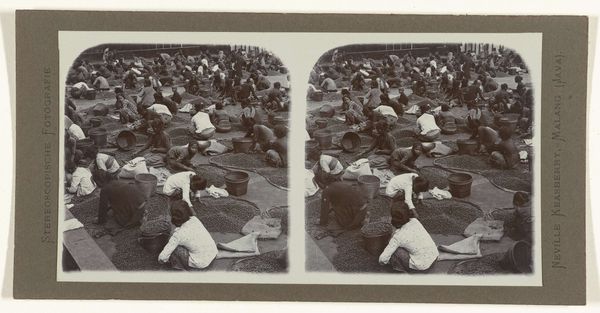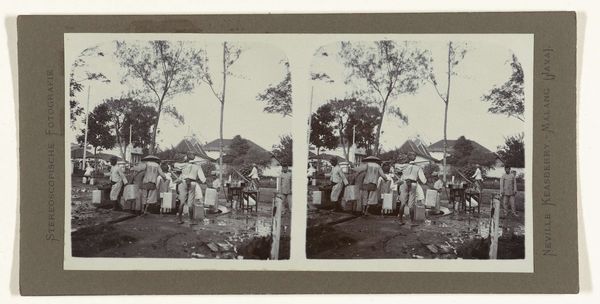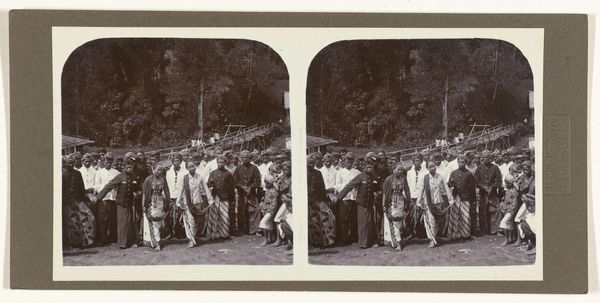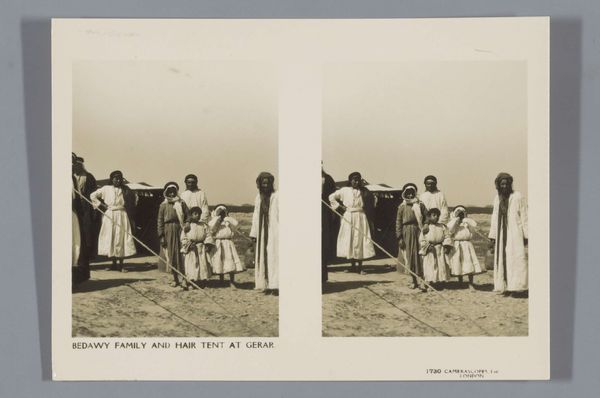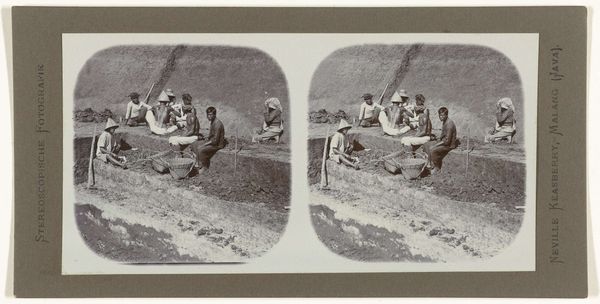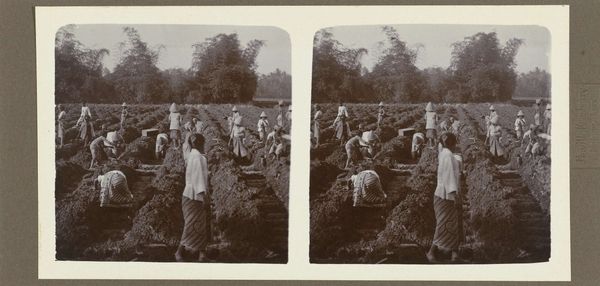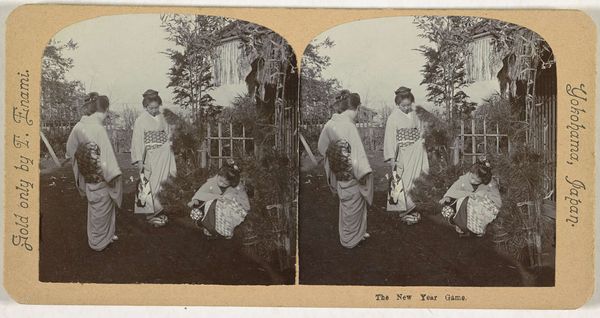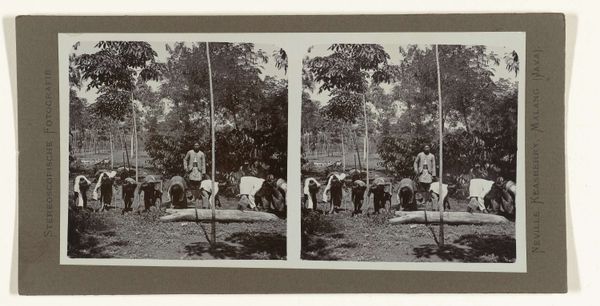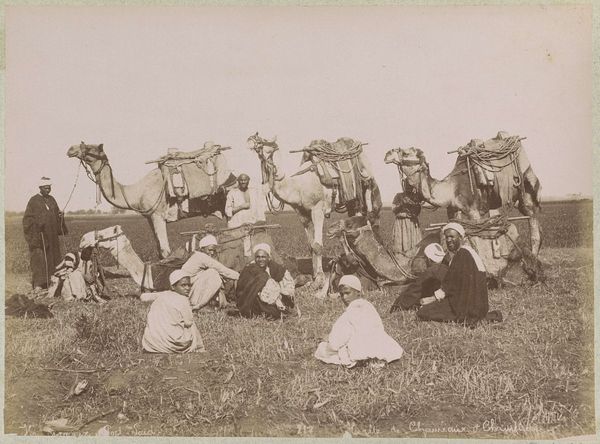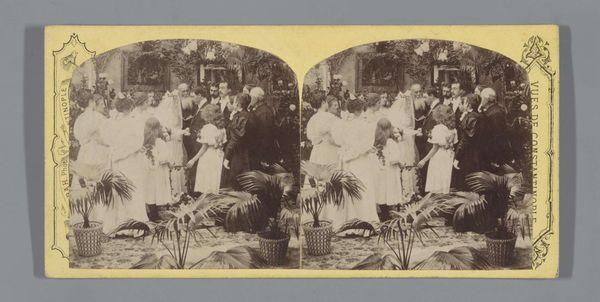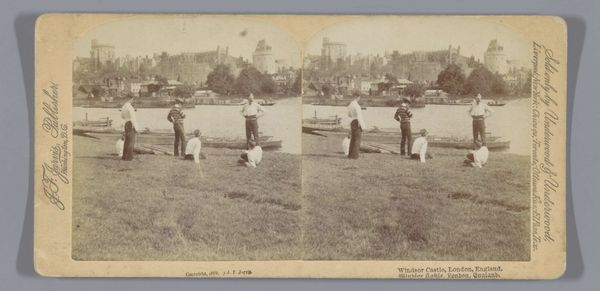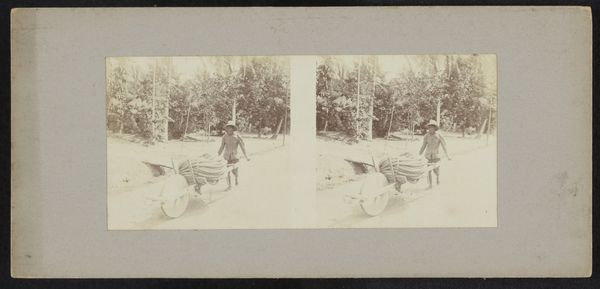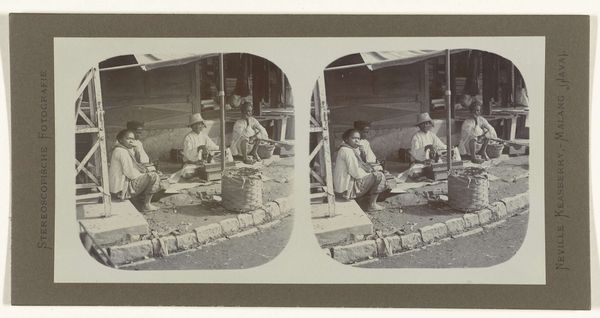
print, photography
#
portrait
# print
#
photography
#
orientalism
#
genre-painting
Dimensions: height 76 mm, width 152 mm
Copyright: Rijks Museum: Open Domain
Curator: Let's consider this intriguing piece, “Javaanse eettentjes in de buitenlucht” – or, Javanese outdoor eateries – a photograph, more specifically a stereoscopic print from between 1900 and 1935, created by Neville Keasberry. Editor: My first thought is how much the bustle and texture remind me of contemporary open-air markets, the air thick with energy. Though, filtered here through this historical, colonial gaze. Curator: Indeed, this image offers a glimpse into a specific colonial context, providing insights into the commercial activities and social interactions within Java at that time. The stereoscopic format itself was incredibly popular then, creating an immersive, almost three-dimensional viewing experience for audiences back in Europe. Editor: And the ‘orientalist’ perspective feels significant. How much agency did the subjects have? Who was this image really for? I can’t help but think about the power dynamics implicit in these types of depictions, the romanticizing of the 'exotic' for Western consumption. Curator: It is crucial to recognize that these photographs are products of their time, capturing not just scenes, but also specific ideologies and assumptions about Java. Consider the arrangement of the vendors and customers, perhaps catering to the photographer's preference or preconceived notions about market scenes. Editor: Precisely. And, for those represented, photography can become a way to not only immortalize a single event but also be used as propaganda, normalizing stereotypes through constant visual representations of specific groups and places. What appears, on the surface, a simple genre scene of everyday life has deeper ramifications of image making and circulation. Curator: Definitely, that duality makes discussing images such as these incredibly challenging and important. Understanding how this stereoscopic photography entered popular visual culture is vital to assessing its social and political impact, in the archipelago but also abroad. Editor: It does make you wonder about what the food smelled like, how the languages mixed and the transactions functioned, too. So much lost and altered as the print traveled West for consumption. Thank you. Curator: Yes, and thank you, considering this work further only motivates more research.
Comments
No comments
Be the first to comment and join the conversation on the ultimate creative platform.

